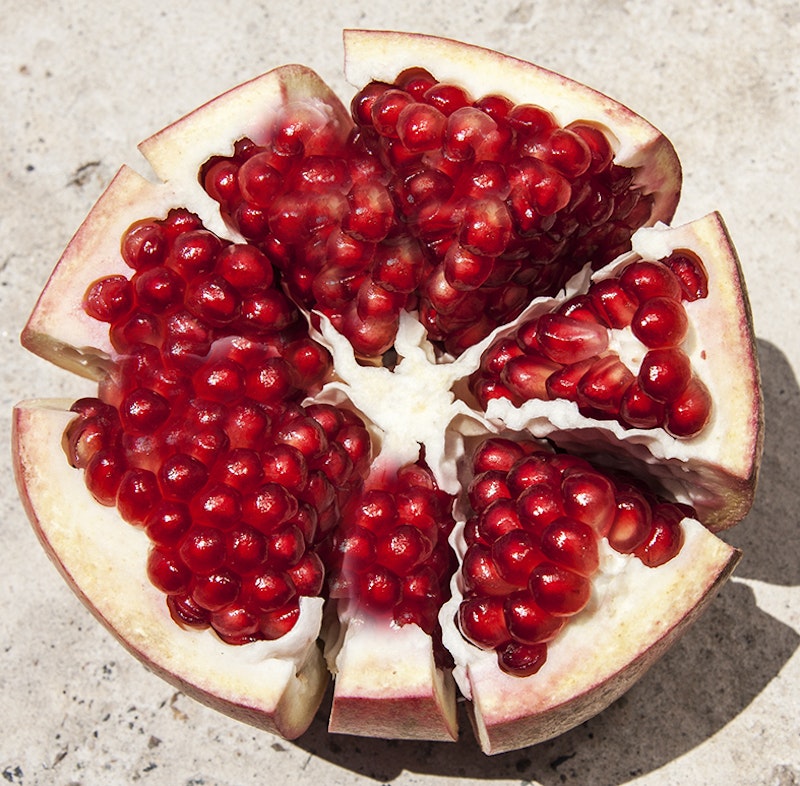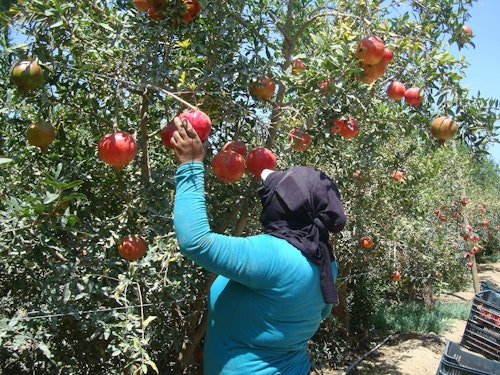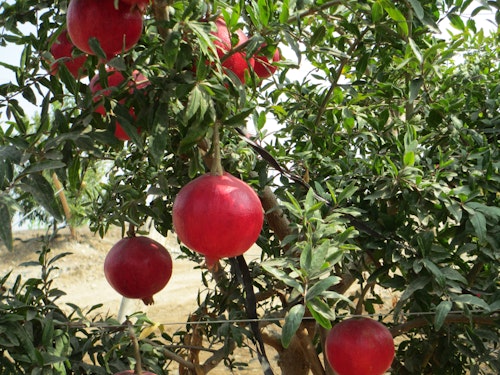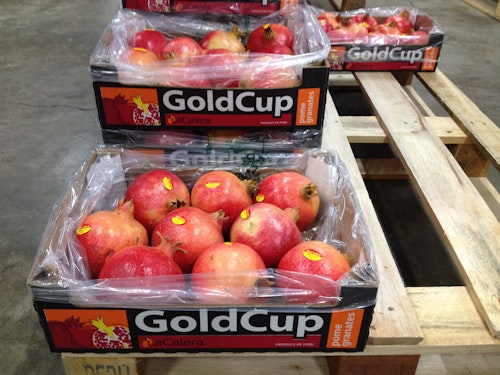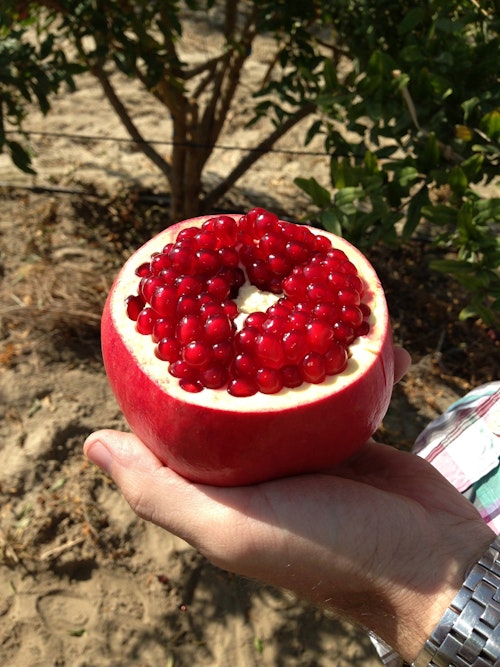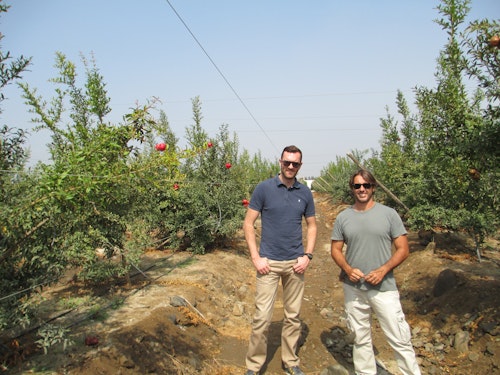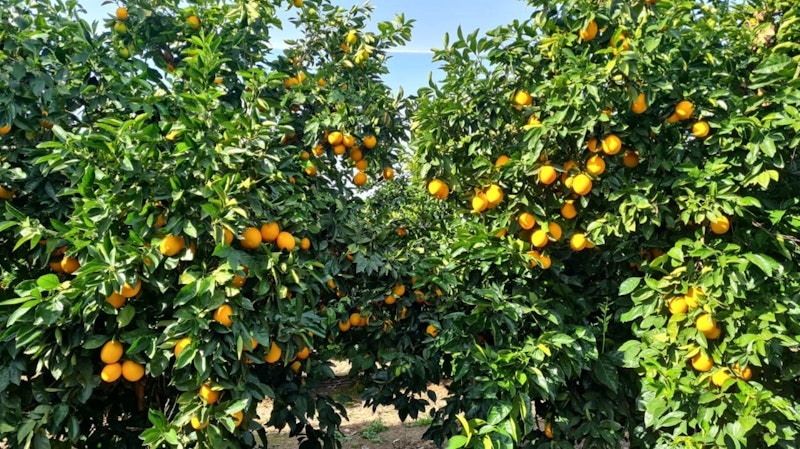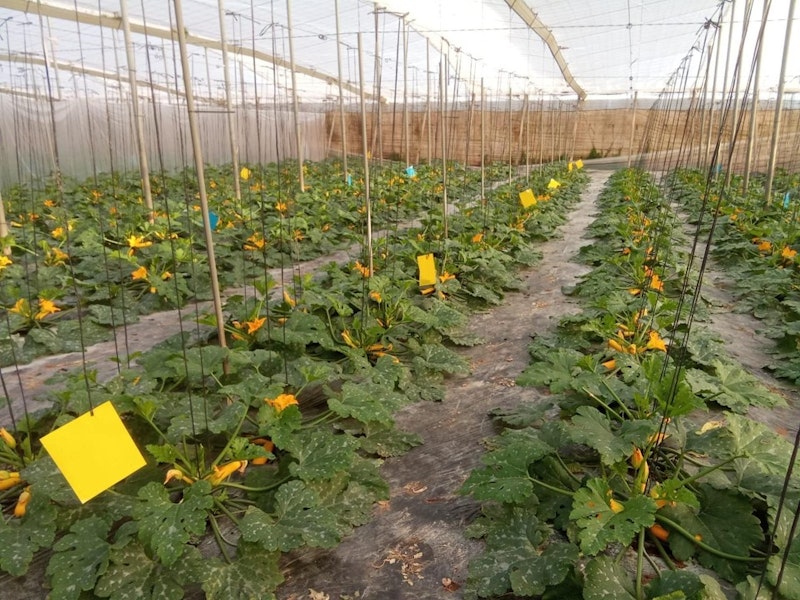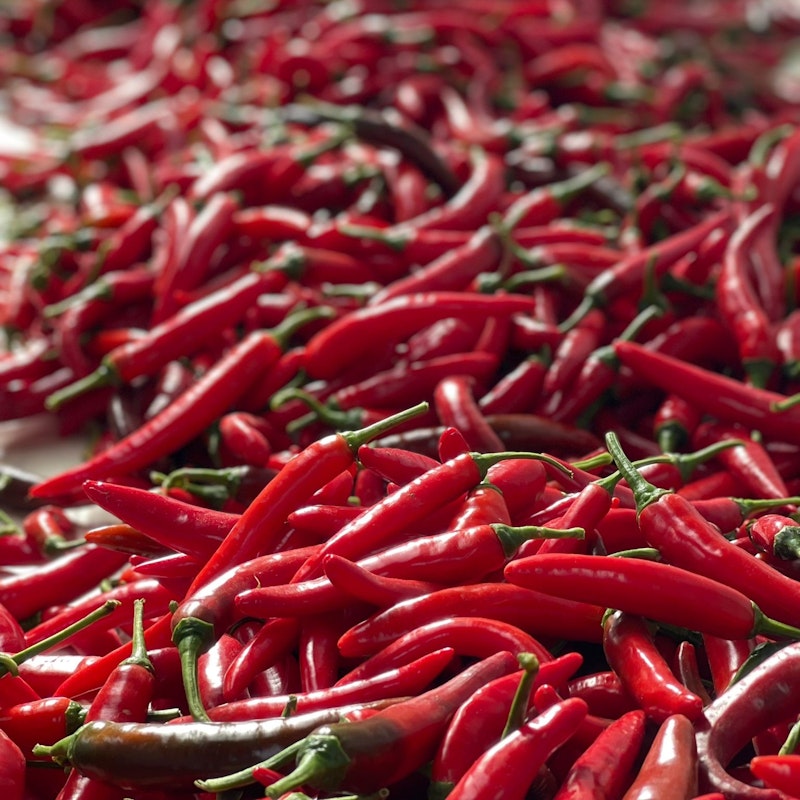Originally native to Iran and northern India, pomegranates are now grown extensively in warm-weather climates both north and south of the equator. Though the pomegranate grows in a wide range of climates, good fruit is produced only where high temperatures and dry atmosphere accompany the ripening period, ideally suited for Peruvian cultivation.
They are celebrated for being low in calories but high in fibre, antioxidants, and other vitamins and minerals. A 100g serving of pomegranate seeds provide 12% of the Daily Value for vitamin C and 16% Daily Value for vitamin K, and contains polyphenols, such as ellagitannins and flavonoids.
The number of seeds in a pomegranate can vary from 200 to about 1400 seeds. Each seed has a surrounding water-laden pulp — the edible sarcotesta that forms from the seed coat — ranging in colour from white to deep red or purple.
Pomegranate seeds are excellent sources of dietary fiber which is entirely contained in the edible seeds. People who choose to discard the seeds forfeit nutritional benefits conveyed by the seed fiber and micronutrients.
